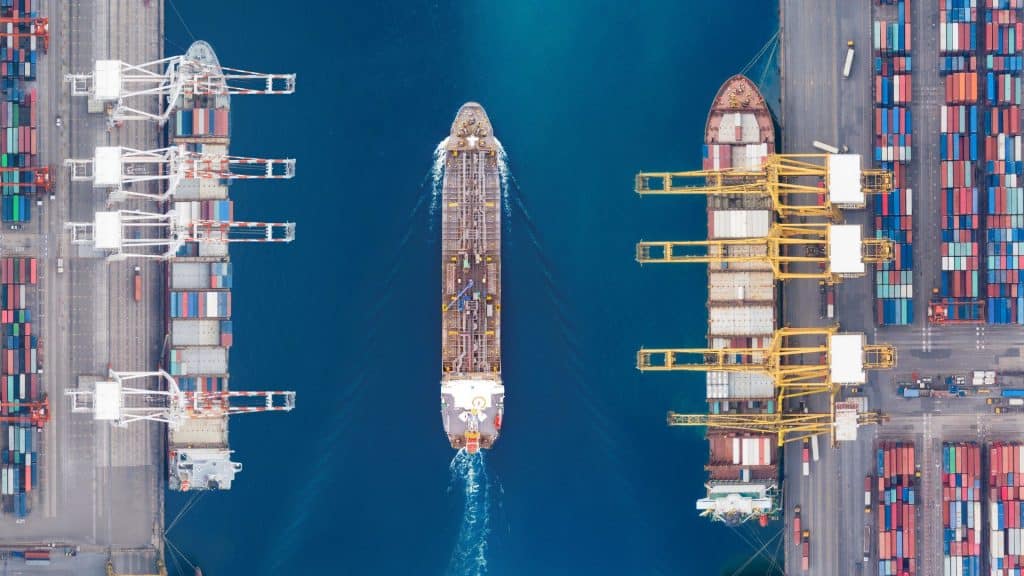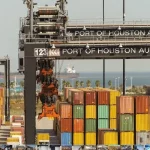THREAT OF STRIKE LOOMS LARGE OVER EAST, GULF COAST PORTS
There’s an increasing abundance of skittishness surrounding the future of East and Gulf Coast ports. The labor contract between the International Longshoremen’s Association and the United States Maritime Alliance (USMX) is set to expire at the end of September. The ILA represents some 70,000 dockworkers, while the USMX represents employers at 36 coastal ports — including three of the U.S.’s five busiest ports: the Port of New York and New Jersey, the Port of Savannah, Georgia, and the Port of Houston. Contract negotiations between the ILA and the USMX began in February 2023 but quickly foundered on the issue of wage increases. Developments since then have not been promising. Retailers are broadly expected to pull forward their peak season freight so as to avoid potential issues come October. But if negotiations between the ILA and USMX deteriorate further — and especially if the ILA follows through with its first coastwide strike since 1977 — the pendulum is likely to swing back in favor of the West Coast.
FMC TIGHTENS RULES ON CHARGING CONTAINER LATE FEES
The Federal Maritime Commission has imposed new billing standards on ocean carriers and terminal operators in an effort to crack down on abusive container late fees. The new requirements focus on demurrage — fees charged by carriers and container terminals when full containers have not been picked up by customers within a certain number of days — and detention, the fees charged to customers if they are late returning the empty container back to the terminal. Starting May 26, container ship carriers and marine terminal operators will be required to issue detention and demurrage invoices within 30 calendar days from when charges were last incurred. Shippers and other billed parties will have at least 30 calendar days to request that charges be refunded. Carriers and terminal operators must try to resolve the matter within 30 calendar days unless the parties agree to a longer timeframe.

WEST COAST LEADS LATEST SURGE IN US CONTAINER IMPORTS
The start of 2024 is bringing with it significant growth in volumes at top U.S. ports. January witnessed a 9.2% year-over year increase in inbound containers. This rise represents the latest reading in four consecutive months of growth, a beacon of positive momentum after a challenging period dominated by the post-pandemic downturn. The East and Gulf coasts painted a different picture, with a modest 2% increase in volume. Notably, Charleston, South Carolina, saw an 8.3% downturn, underscoring the uneven nature of the recovery across the nation’s maritime gateways. This disparity raises important questions about the underlying factors driving these regional performances. While the West Coast’s rebound could be attributed to a confluence of improved efficiencies and strategic shifts, the East and Gulf coasts’ slower pace suggests potential challenges in maintaining the pandemic-era momentum.
MISSILE MISSES TORM TANKER, BUT HOUTHI ATTACKS ARE AFFECTING TRADE
More allied actions on Yemen’s Houthi Movement over the weekend was aimed at degrading the organisation’s ability to mount these attacks. Reuters reported that US Defense Secretary Lloyd Austin said the latest wave of strikes were meant “to further disrupt and degrade the capabilities of the Iranian-backed Houthi militia”. Persistent attacks on Houthi positions have failed to prevent attacks taking place, with the latest the attack on the 50,000dwt chemical tanker Torm Thor. According to US CENTCOM the destroyer USS Mason downed the missile before it could find its target.




